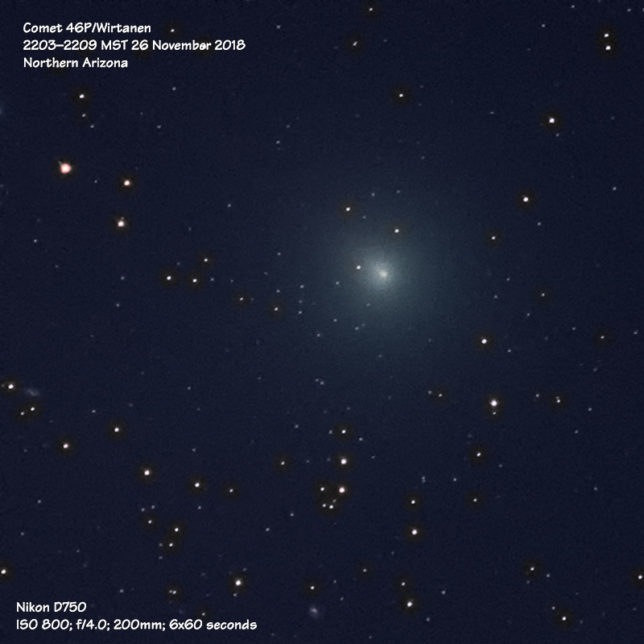The much-anticipated Comet 46P/Wirtanen is nearing its closest approach (approximately 30 lunar distances) to Earth. From the SpaceWeather.com site (cited 11/28/2018):
Small but hyperactive Comet 46P/Wirtanen is approaching Earth and could soon become visible to the naked eye. On Dec. 16th, the kilometer-wide ball of dirty ice will be less than 11.5 million km away–making it one of the 10 closest-approaching comets of the Space Age.
Earlier this week I made my first attempt at photographing the comet. I had patiently waited until the Moon was several days past full so that I could capture images of the comet without the interference of moonlight. I wasn’t successful because the moon was already rising by the time I was completely set up. Even with the bright sky in the presence of an 85% illuminated moon, I was able to get acceptable images.
Not only was this my first effort to photograph the comet, it was my first effort to even find it in the sky. Having a pair of binoculars helps.
I used a Nikon 85mm f/1.8 lens because it has a moderate field of view (24°x16°) and is a “bright” lens. It can [usually] successfully autofocus at night using bright stars, planets, or best, the moon. And, as I mentioned above, the moon was already above the horizon.

Later, I switched the lens and used my ancient manual focus Nikon 80–200mm zoom lens. This lens is almost 40 years old—and from the images it appears that it needs some servicing. Many of the stars have a “bulge” in the upper left. Maybe I’ll send it to Nikon servicing—if they still work on this old lens.

We are now entering an extended period of unsettled weather across the southwest U.S. and there may not be another chance to capture images of the comet for some time. I hope the weather is clear on the night of December 15 when the comet passes very close to the constellation Pleiades. That should make for an interesting sight!